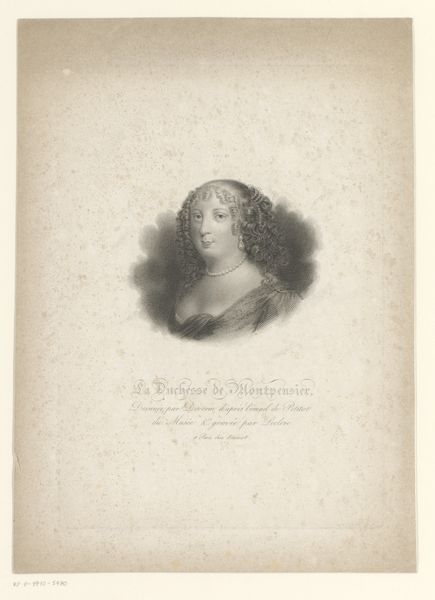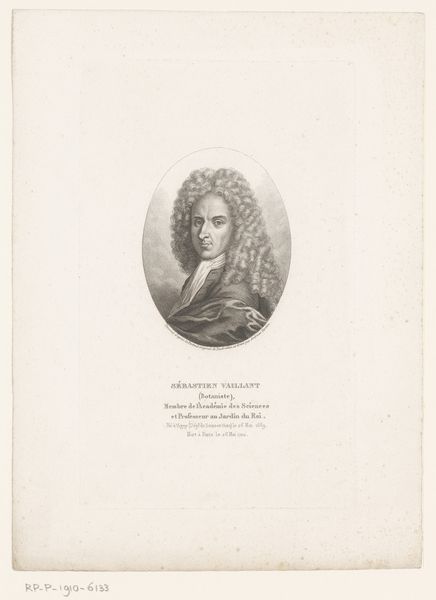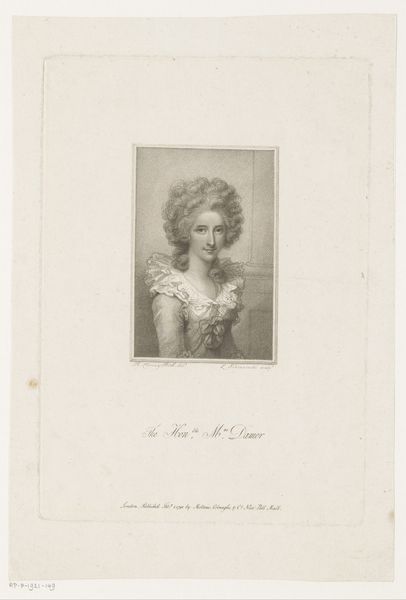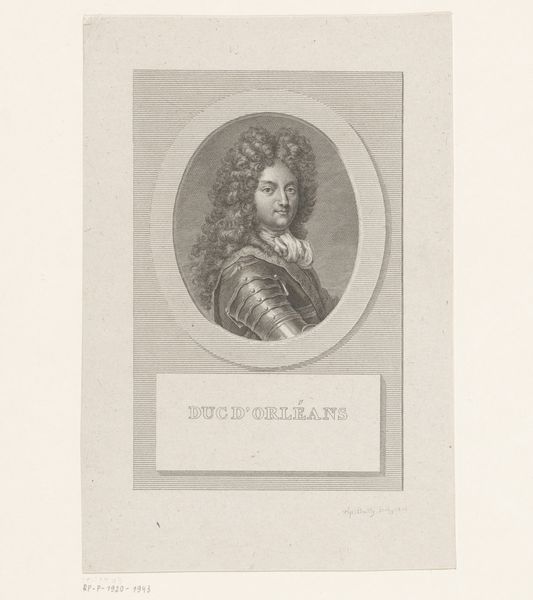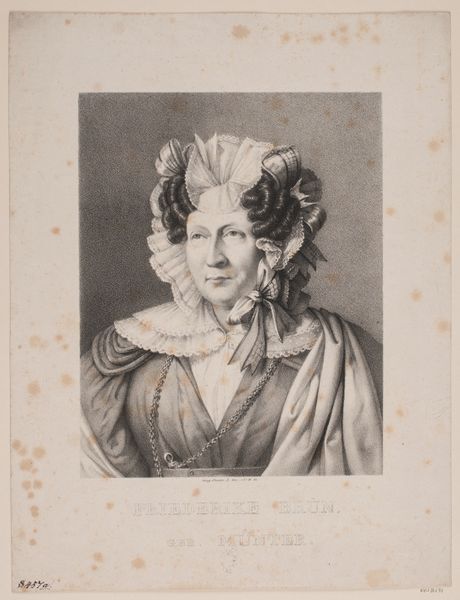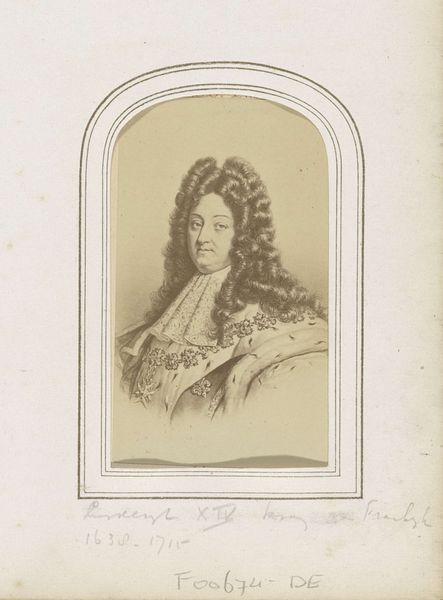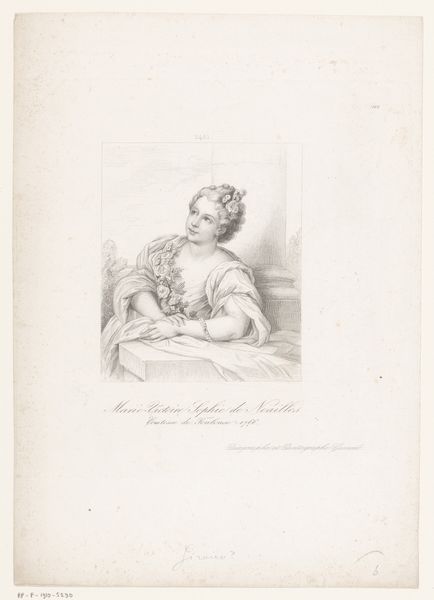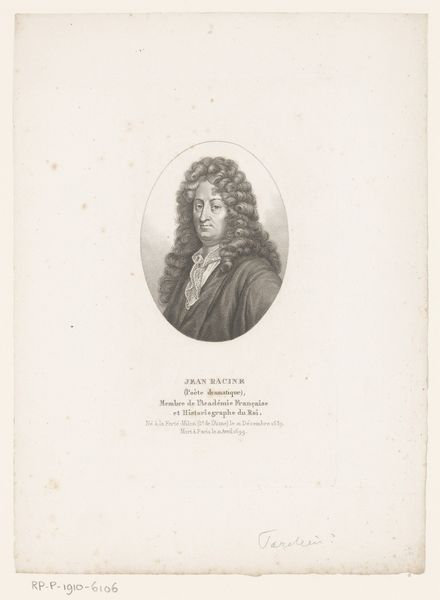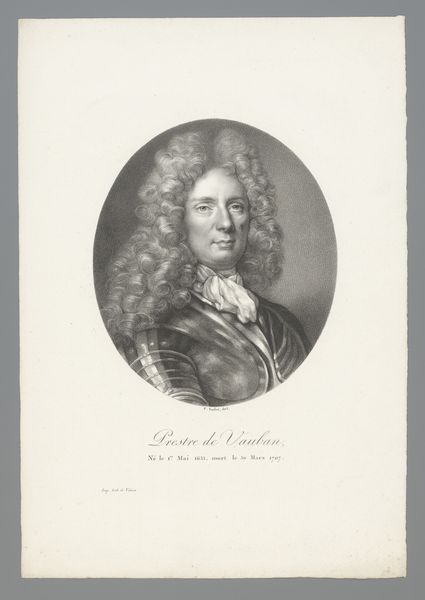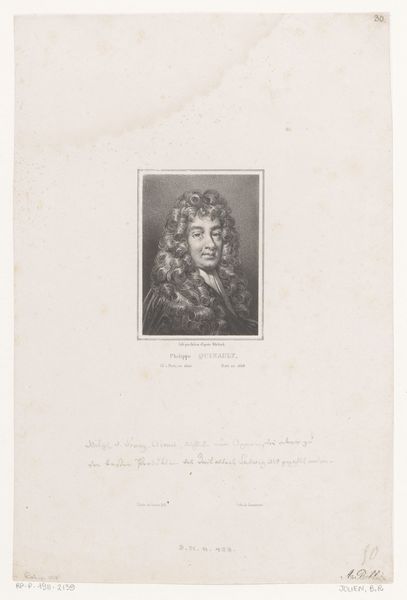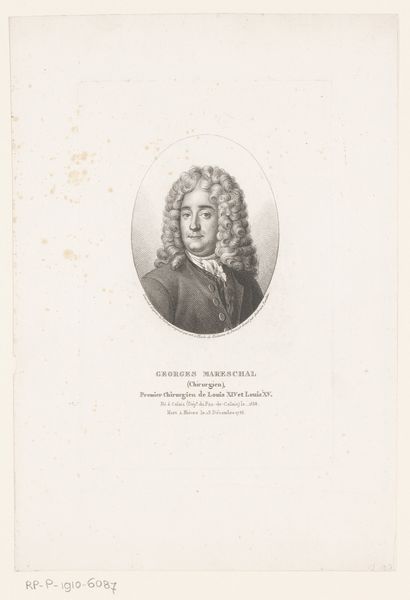
drawing, print, paper, graphite, engraving
#
portrait
#
drawing
# print
#
paper
#
line
#
graphite
#
history-painting
#
academic-art
#
engraving
#
realism
Dimensions: height 189 mm, width 178 mm
Copyright: Rijks Museum: Open Domain
Curator: What we have here is a portrait of Louis Alexandre de Bourbon, Count of Toulouse, dating roughly from 1838 to 1841. It's attributed to Emile Giroux and is a print, specifically an engraving, crafted with graphite on paper. Editor: It's funny, seeing him rendered so delicately. He seems like a cloud, a being almost entirely composed of powdered wig and frills. I'm struck by how ephemeral he appears despite the implied weight of that armor. Curator: I find it fascinating to consider the labor involved. This wasn’t a spontaneous sketch. The intricate lines of the engraving process and the medium of graphite suggest deliberate craftsmanship, mass production and a distribution chain to reach a public eager for images of the nobility. How do you view the relationship between labor and high status displayed here? Editor: It’s strange, isn’t it? All that work, all that craft, just to bolster this… fantasy. I mean, the very notion of the untouchable nobleman seems at odds with the grit and the process of creating this image. I wonder, did people back then even stop to consider who was making their beautiful images and where the materials came from? It speaks of consumption as a statement. Curator: It feels like a dance, doesn’t it? A dance between surface and substance, between the weight of history and the lightness of being… I find myself contemplating what the Count of Toulouse might think about this ghostly rendition. Did he embrace his powdered visage or secretly long to shed it all and become one with the artisans bringing his image to life? I suspect, not at all, perhaps only to enhance it with more exquisite frills. Editor: Or consider it as raw material. Both noble, worker and the resources that fed them. Ultimately it is a cycle that depends on everything within it. This process reduces the complexities of production down to line and form. In an era when craft determined a very defined strata. Interesting tension isn't it? Curator: It is. This portrait holds a kind of delicate tension between history and technique. Now I'm left wondering if Louis himself was ever curious about the alchemy that transformed him from a living being into a graphite-rendered ghost. Editor: Agreed, each character represented contributes towards understanding each other’s social positioning which at times, blur in between the lines like the work in graphite.
Comments
No comments
Be the first to comment and join the conversation on the ultimate creative platform.
